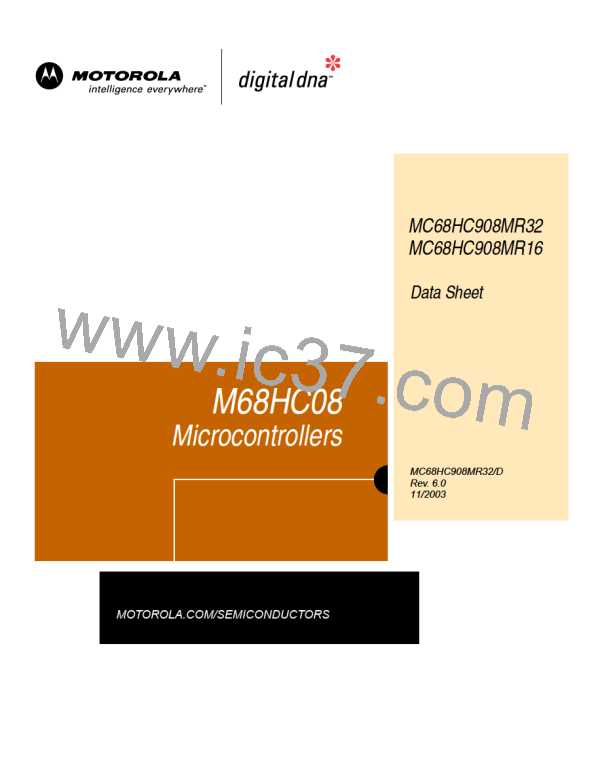Serial Peripheral Interface Module (SPI)
Error Conditions
In a master SPI with the mode fault enable bit (MODFEN) set, the mode fault flag
(MODF) is set if SS goes to logic 0. A mode fault in a master SPI causes these
events to occur:
•
•
•
•
•
If ERRIE = 1, the SPI generates an SPI receiver/error CPU interrupt request.
The SPE bit is cleared.
The SPTE bit is set.
The SPI state counter is cleared.
The data direction register of the shared I/O port regains control of port
drivers.
NOTE:
To prevent bus contention with another master SPI after a mode fault error, clear
all SPI bits of the data direction register of the shared I/O port before enabling the
SPI.
When configured as a slave (SPMSTR = 0), the MODF flag is set if SS goes high
during a transmission. When CPHA = 0, a transmission begins when SS goes low
and ends once the incoming SPSCK goes back to its idle level following the shift
of the eighth data bit. When CPHA = 1, the transmission begins when the SPSCK
leaves its idle level and SS is already low. The transmission continues until the
SPSCK returns to its idle level following the shift of the last data bit. See 15.5
Transmission Formats.
NOTE:
Setting the MODF flag does not clear the SPMSTR bit. Reading SPMSTR when
MODF = 1 will indicate a mode fault error occurred in either master mode or slave
mode.
When CPHA = 0, a MODF occurs if a slave is selected (SS is at logic 0) and later
unselected (SS is at logic 1) even if no SPSCK is sent to that slave. This happens
because SS at logic 0 indicates the start of the transmission (MISO driven out with
the value of MSB) for CPHA = 0. When CPHA = 1, a slave can be selected and
then later unselected with no transmission occurring. Therefore, MODF does not
occur since a transmission was never begun.
In a slave SPI (MSTR = 0), the MODF bit generates an SPI receiver/error CPU
interrupt request if the ERRIE bit is set. The MODF bit does not clear the SPE bit
or reset the SPI in any way. Software can abort the SPI transmission by clearing
the SPE bit of the slave.
NOTE:
A logic 1 voltage on the SS pin of a slave SPI puts the MISO pin in a high
impedance state. Also, the slave SPI ignores all incoming SPSCK clocks, even if it
was already in the middle of a transmission.
To clear the MODF flag, read the SPSCR with the MODF bit set and then write to
the SPCR register. This entire clearing procedure must occur with no MODF
condition existing or else the flag is not cleared.
MC68HC908MR32 • MC68HC908MR16 — Rev. 6.0
MOTOROLA Serial Peripheral Interface Module (SPI)
Data Sheet
221

 FREESCALE [ Freescale ]
FREESCALE [ Freescale ]